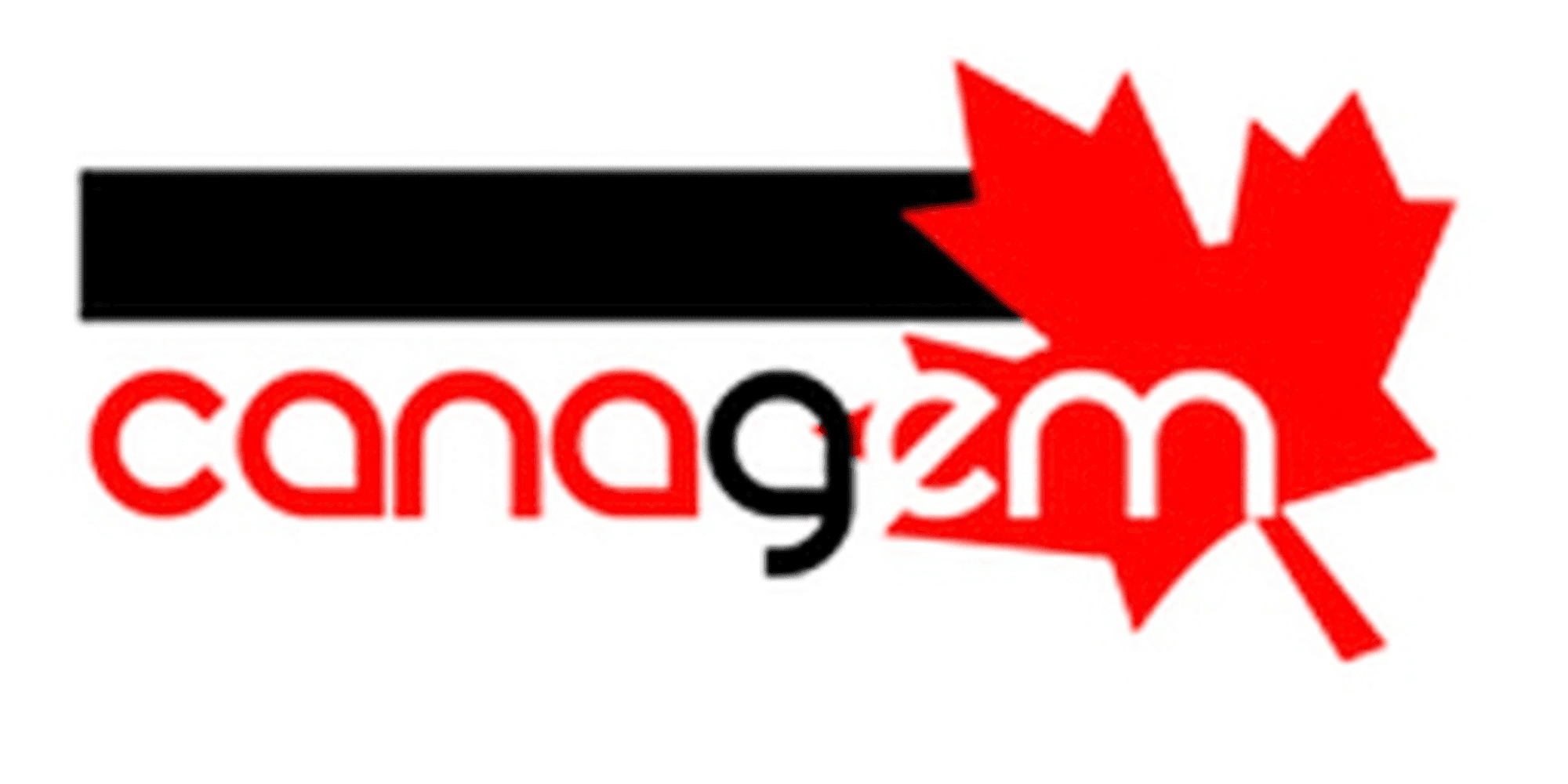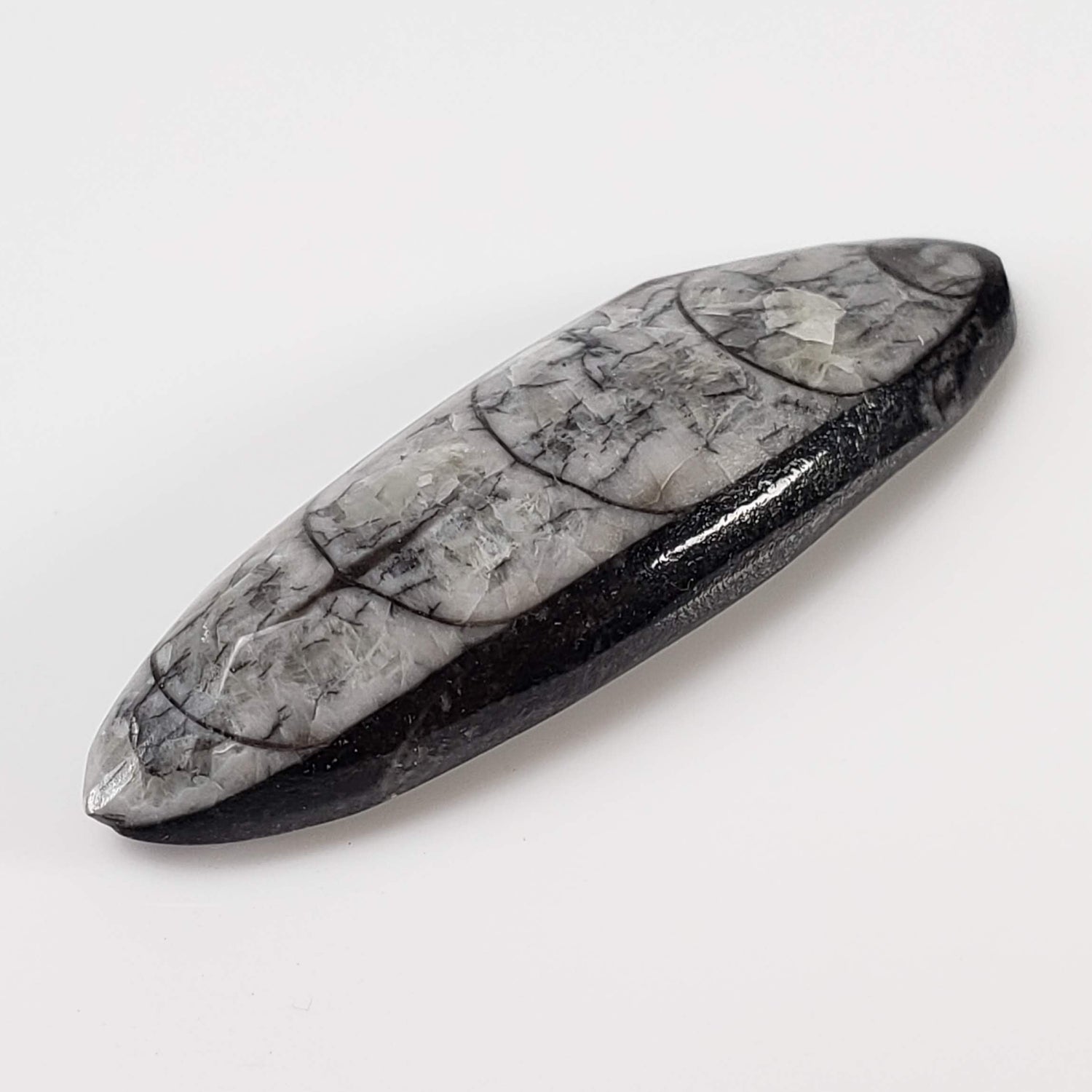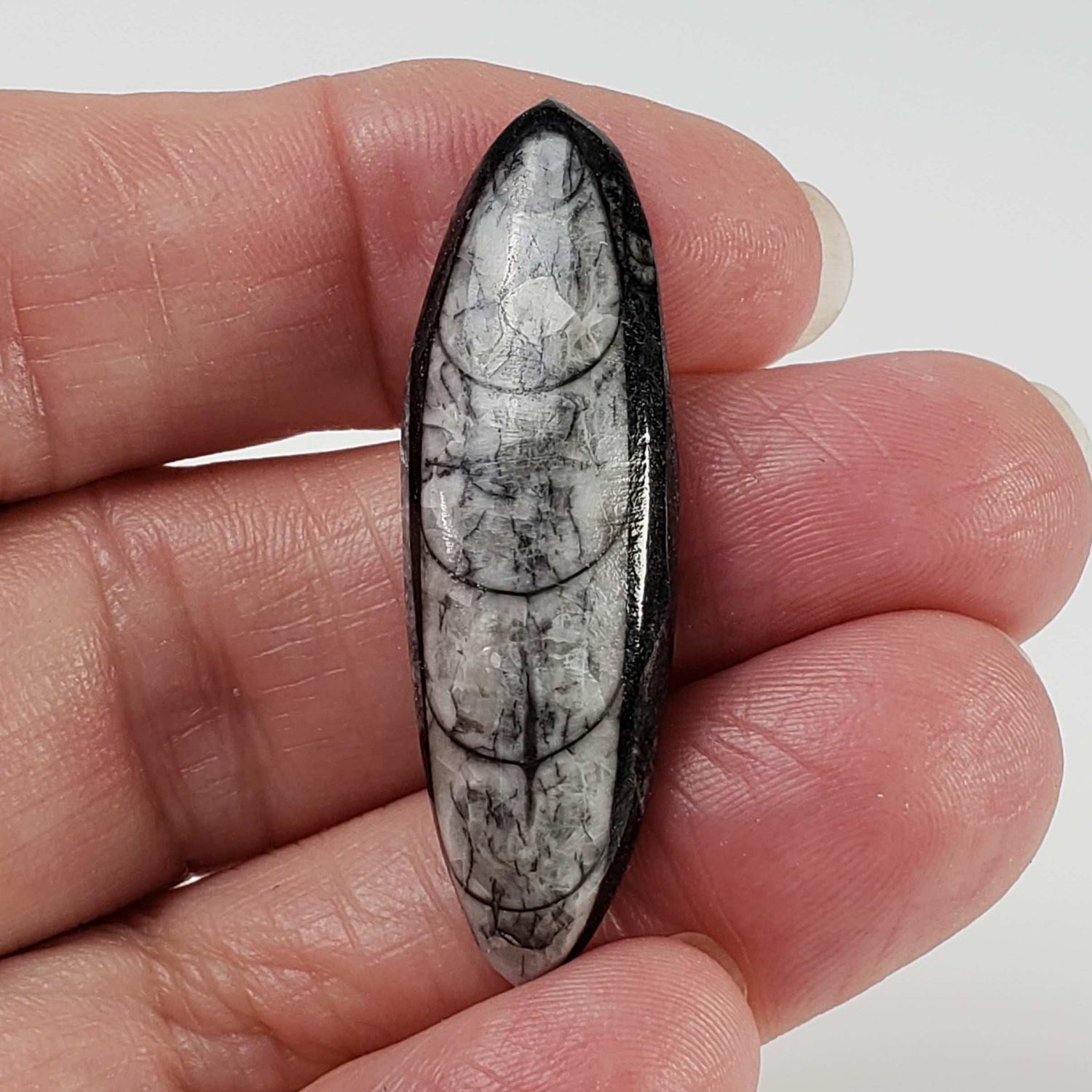Sort by:
98 products
98 products
This is a great looking group of Northwest Africa 2849 L4 classified meteorite Micros. This meteorite was found in the Sahara Desert in 2004 and the total recovered weight is recorded as a low 846 grams. It has a Shock stage of 2 and a Weathering grade of 3.
This is a very good quality L4 classified meteorite micromount and is unusually consisting of a chocolate brown mottled matrix with large inclusions and chondrules. This meteorite is quite friable and porous.
These specimens will come protected in a gem jar, and includes a Canagem Collection specimen card. Would be a beautiful addition to any new or existing collection.
This is a 16.9ct lot of beautiful rough emeralds. This is the exact lot that you will receive. The sizes of the emeralds range from 7.5 to 9.0 mm.
Ancient Romans associated the emerald with Venus, the goddess of love and beauty. They firmly believed that this stone's purity was so strong that no evil presence could exist around it.
Emerald is connected to the heart chakra. It is said to bring about great love and promote happiness and faithfulness in a relationship.
This is a lovely fossilized, and highly polished natural Orthoceras from Morocco. It measures 43x13 mm and weighs 6.1 grams. Orthoceras ("straight horn") is a genus of extinct cephalopod. This genus is sometimes called Orthoceratites. Note it is sometimes misspelled as Orthocera, Orthocerus or Orthoceros. Orthoceras are common fossils and have been found on many continents, including the Americas, Africa, Europe and Asia. They are dated to the lower Ordovician to Triassic ages (500 to 190 millions years ago). They belong to a group of predators known as cephalopods, which includes their living relatives the octopus, squid, cuttlefish and nautilus.
Orthoceras fossils are great as a collectors item or can be used for jewelry making.
This is a superb looking fragment of a Sahara Desert NWA 515 classified meteorite weighing 1.086 grams. Its dimensions are 17x9x5mm.
This meteorite was found in the desert in 2000 and has a total mass of 20 kg and is classified as an L6. It has a shock level 3 and a weathering grade W2.
This piece displays extremely well and would be a beautiful addition to any new or existing collection. Comes with a The Mark Bostick Collection and a Canagem Collection specimen card.
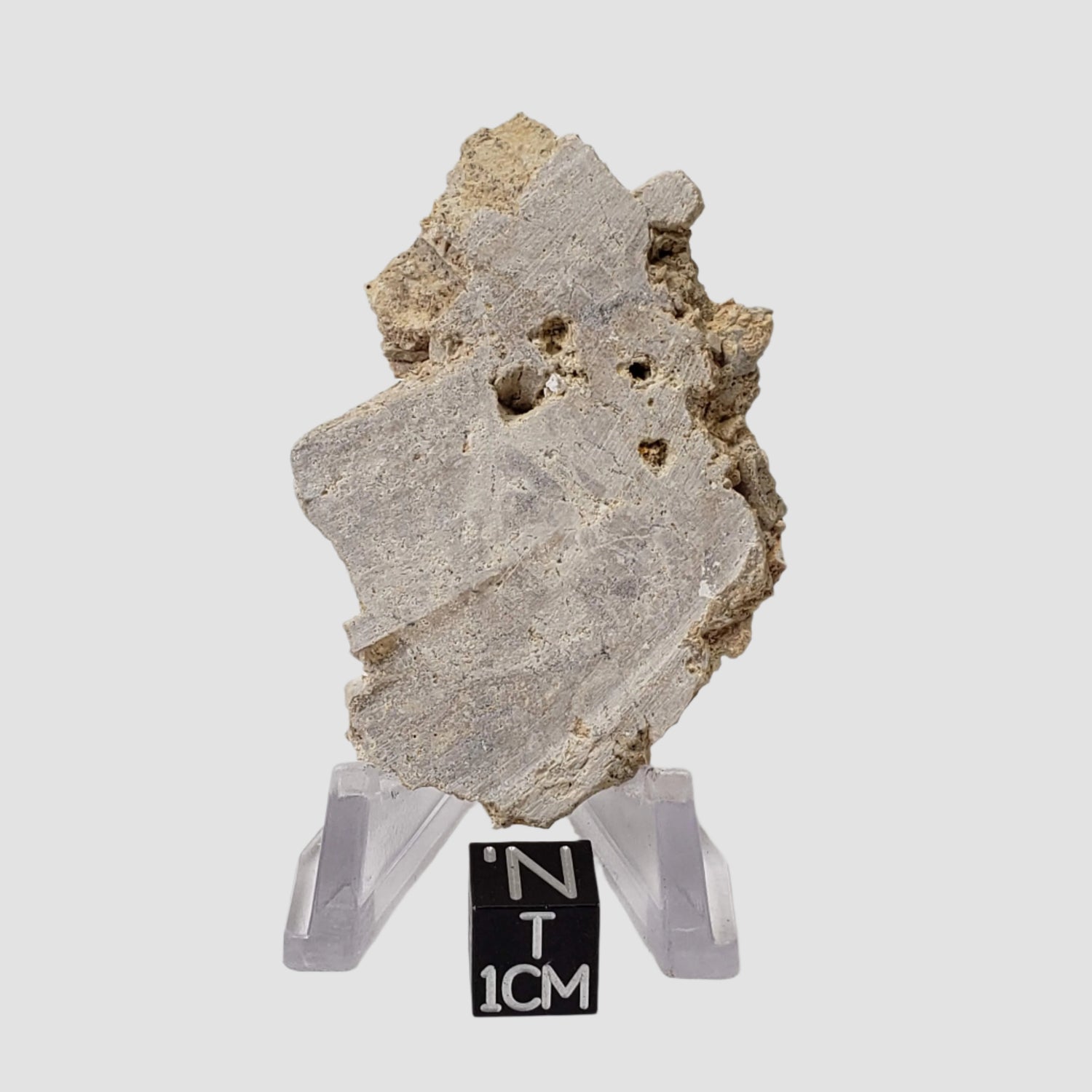
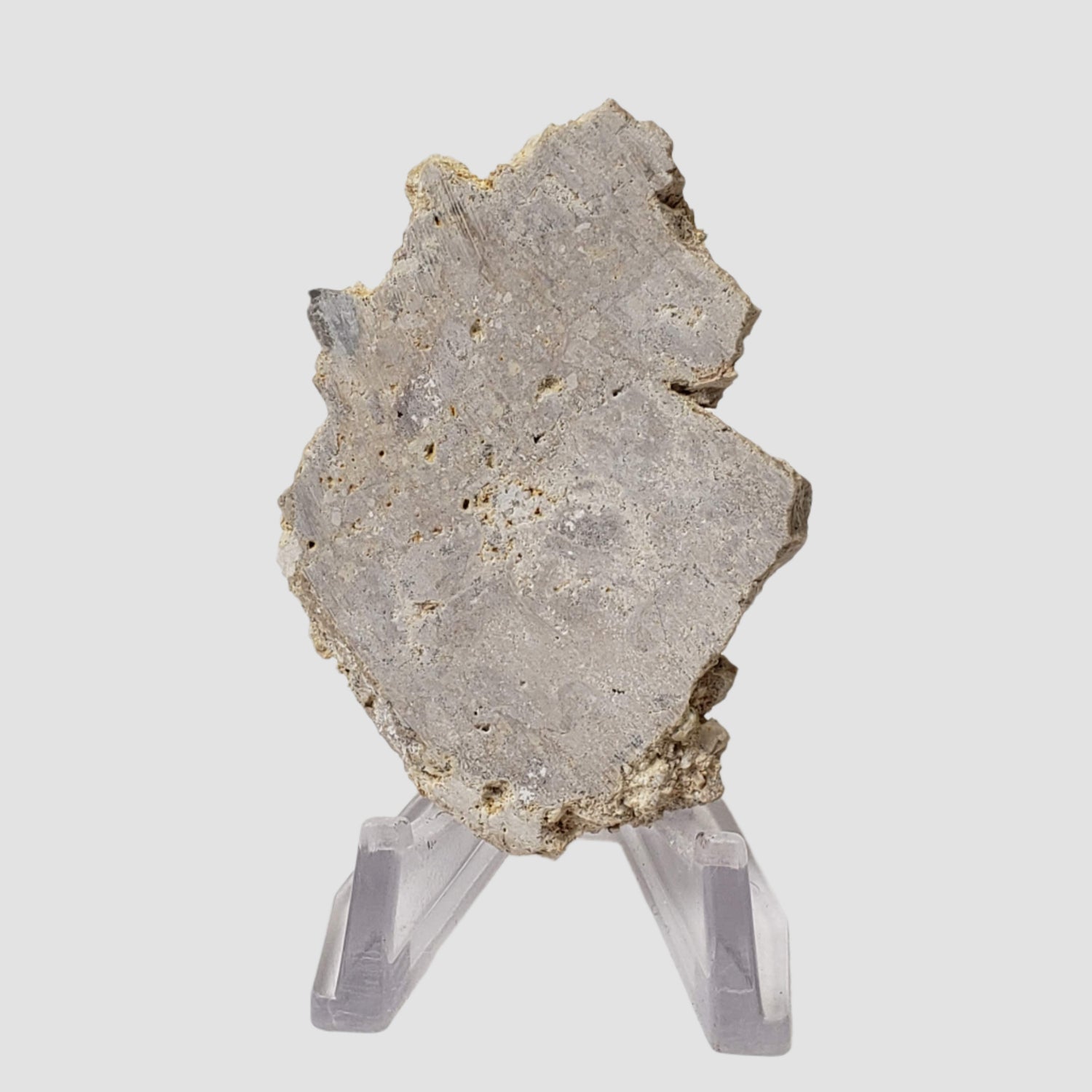
Impactite Fallback Breccia | Steinheim Basin Impact Structure | 21.3 grams | Slice | Ries, Germany
$14.00 CAD
Unit price perImpactite Fallback Breccia | Steinheim Basin Impact Structure | 21.3 grams | Slice | Ries, Germany
$14.00 CAD
Unit price perThis is a fantastic Impactite Fallback Breccia from Germany weighing 21.3 grams and measuring 60x41x6mm. Although not a meteorite, impactites and shatter cones are directly linked to them and their impacts. The Steinheim Basin today exhibits a distinct morphological depression that is ∼110 m deep and ∼3.5 km in diameter; the height of the central uplift totals to more than 140 m. The original size of the pristine crater is estimated to be ∼3.8 km with an original depth of ∼205 m.
As this drainless morphological depression was filled by lake sediments shortly after the impact, the primary crater morphology is widely preserved. The crater rim is formed by steeply inclined and intensely brecciated Upper Jurassic limestone blocks that also contain numerous shattered chert nodules, as well as some loose blocks of the host limestone. An impact breccia, referred to as the so-called ”Primäre Beckenbrekzie” (“primary basin breccia”) and interpreted as a “fallback breccia”, is known from many drillings in the Steinheim Basin.
Mainly composed of Middle to Upper Jurassic limestones, marls, mudstones, and sandstones, the impact breccia inside the morphological depression of the Steinheim Basin is overlain by lake sediments and is obviously preserved in its original thickness and position. This piece displays very well and is a very nice size showing multiple characteristics of its origin. Would make a beautiful addition to any collection.
This is an individual Northwest Africa or NWA 4293 formerly known as NQ10, an H6 chondrite found in the Sahara desert in 2005. It is one of 5854 approved meteorites classified as such. The meteorite weighs 4 grams with dimensions of 16x14x11 mm.
This fascinating meteorite was mainly found as small individuals and the total weight of the 100's of pieces recovered is recorded as a low 25 kg. The meteorite has a shock stage of 4 and weathering grade of 2. NWA 4293 is interesting in the way it looks as can be seen in the images. Most pieces are free of caliche, have a smooth gray surface and are small complete individuals. The unusual appearance is due to shock hardening and being sandblasted in the desert.
This specimen comes with a Canagem specimen card. Would make a beautiful addition to any new or existing collection.
This is a sculpted plate of Limonite after Pyrite. Limonite after pyrite is a type of pseudomorph, meaning limonite has replaced the original pyrite crystal structure while keeping its shape. This occurs when pyrite oxidizes over time, often in the presence of water and oxygen, transforming into limonite, a mixture of hydrated iron oxides. The result is a rusty brown to yellowish mineral that retains pyrite’s cubic or pyritohedral shape but with a softer, earthy texture.
It believed that limonite after pyrite combines pyrite’s energy of strength and manifestation with limonite’s grounding and protective qualities. It is sometimes associated with stability, resilience, and transformation, symbolizing the ability to adapt and grow through life’s changes.
This is a great thumbnail sized Limonite after Pyrite pseudomorph specimen from Spain.
Name: Limonite after Pyrite Cluster
Specimen Size: Thumbnail-Sized
Dimensions: 25x15x7 mm / 1.0x0.6x0.3 inches
Weight: 3.09 Grams / 0.1 oz
Origin: Mined in Carratraca, Spain


Impactite Fallback Breccia | Steinheim Basin Impact Structure | 16 grams | Slice | Ries, Germany
$11.00 CAD
Unit price perImpactite Fallback Breccia | Steinheim Basin Impact Structure | 16 grams | Slice | Ries, Germany
$11.00 CAD
Unit price perThis is a fantastic Impactite Fallback Breccia from Germany weighing 16 grams and measuring 48x37x7mm. Although not a meteorite, impactites and shatter cones are directly linked to them and their impacts. The Steinheim Basin today exhibits a distinct morphological depression that is ∼110 m deep and ∼3.5 km in diameter; the height of the central uplift totals to more than 140 m. The original size of the pristine crater is estimated to be ∼3.8 km with an original depth of ∼205 m.
As this drainless morphological depression was filled by lake sediments shortly after the impact, the primary crater morphology is widely preserved. The crater rim is formed by steeply inclined and intensely brecciated Upper Jurassic limestone blocks that also contain numerous shattered chert nodules, as well as some loose blocks of the host limestone. An impact breccia, referred to as the so-called ”Primäre Beckenbrekzie” (“primary basin breccia”) and interpreted as a “fallback breccia”, is known from many drillings in the Steinheim Basin.
Mainly composed of Middle to Upper Jurassic limestones, marls, mudstones, and sandstones, the impact breccia inside the morphological depression of the Steinheim Basin is overlain by lake sediments and is obviously preserved in its original thickness and position. This piece displays very well and is a very nice size showing multiple characteristics of its origin. Would make a beautiful addition to any collection.
You will receive 1 Sikhote-Alin meteorite. This size of Sikhote-Alin is great for jewelry making and a variety other small projects.
These are great looking Russian Sikhote-Alin classified meteorites weighing 0.2-0.49 grams. This Iron (IIAB) Coarsest Octahedrite classified meteorite was recovered in Russia after the fall of February 12, 1947. So far approximately 23 tons of this material have been recovered. These specimens are known as shrapnel specimens, ripped and torn edges reminiscent of bomb shrapnel. They broke due to atmospheric pressure and/or mid-air collisions, and possibly explosive fragmentation upon impact. These pieces are a good example of the shrapnel type Sikhote-Alin.
Comes with a Canagem Collection specimen card.
This is an individual Northwest Africa or NWA 4293 formerly known as NQ10, an H6 chondrite found in the Sahara desert in 2005. It is one of 5854 approved meteorites classified as such. The meteorite weighs 5.2 grams with dimensions of 25x16x10 mm.
This fascinating meteorite was mainly found as small individuals and the total weight of the 100's of pieces recovered is recorded as a low 25 kg. The meteorite has a shock stage of 4 and weathering grade of 2. NWA 4293 is interesting in the way it looks as can be seen in the images. Most pieces are free of caliche, have a smooth gray surface and are small complete individuals. The unusual appearance is due to shock hardening and being sandblasted in the desert.
This specimen comes with a Canagem specimen card. Would make a beautiful addition to any new or existing collection.
This is an individual Northwest Africa or NWA 4293 formerly known as NQ10, an H6 chondrite found in the Sahara desert in 2005. It is one of 5854 approved meteorites classified as such. The meteorite weighs 5.5 grams with dimensions of 22x18x9 mm.
This fascinating meteorite was mainly found as small individuals and the total weight of the 100's of pieces recovered is recorded as a low 25 kg. The meteorite has a shock stage of 4 and weathering grade of 2. NWA 4293 is interesting in the way it looks as can be seen in the images. Most pieces are free of caliche, have a smooth gray surface and are small complete individuals. The unusual appearance is due to shock hardening and being sandblasted in the desert.
This specimen comes with a Canagem specimen card. Would make a beautiful addition to any new or existing collection.
Stilbite is a zeolite mineral appreciated for its delicate crystal formations and pastel hues, ranging from colorless to white, yellow, pink, and peach. It forms distinctive tabular crystals with a bowtie or butterfly shape and exhibits a vitreous to pearly luster. Commonly found in cavities in volcanic rocks, stilbite is often associated with other zeolite minerals.
Stilbite is believed to have soothing and spiritually uplifting qualities, often associated with promoting emotional healing, inner peace, and mental clarity. Many consider it helpful for enhancing spiritual connection, deepening meditation, and supporting dream recall or lucid dreaming. Often linked to the heart chakra, it is thought to encourage love, compassion, and the release of emotional wounds. Stilbite may assist in navigating transitions, amplifying the energy of other crystals, and fostering a calming environment by shifting negative energy into positive vibrations.
Name: Stilbite Crystal
Specimen Size: Miniature-Sized
Dimensions: 45x34x31 mm / 1.8x1.3x1.2 inches
Weight: 18 Grams / 0.6 Ounces
Origin: Mined in India
Stilbite is a zeolite mineral appreciated for its delicate crystal formations and pastel hues, ranging from colorless to white, yellow, pink, and peach. It forms distinctive tabular crystals with a bowtie or butterfly shape and exhibits a vitreous to pearly luster. Commonly found in cavities in volcanic rocks, stilbite is often associated with other zeolite minerals.
Stilbite is believed to have calming energy, supporting spiritual growth and emotional healing.
Name: Stilbite Crystal
Specimen Size: Miniature-Sized
Dimensions: 46x27x23 mm / 1.8x1.1x0.9 inches
Weight: 17 Grams / 0.6 Ounces
Origin: Mined in India
This is a nice fossilized, highly polished natural Ammonite in brown marble from Morocco, it is perfect for gift giving to a new fossil collector. This Ammonite weighs 20 grams in weight and measures 48x39x7 mm. Ammonites are perhaps the most widely known fossil, possessing the typically ribbed spiral-form shell. These creatures lived in the seas between 240 - 65 million years ago, when they became extinct along with the dinosaurs. They belong to a group of predators known as cephalopods, which includes their living relatives the octopus, squid, cuttlefish and nautilus. This fossil would be excellent for jewelry making.


Pseudomorph Goethite After Marcasite | Prophecy Stone | 17 gr | Farafra Oasis, Egypt
$15.00 CAD
Unit price perPseudomorph Goethite After Marcasite | Prophecy Stone | 17 gr | Farafra Oasis, Egypt
$15.00 CAD
Unit price perPseudomorphs are mineral specimens that have the external shape of one mineral but are composed of another. The pseudomorph goethite after marcasite forms when marcasite is exposed to oxidizing conditions and starts to oxidize and break down. As the marcasite breaks down, goethite replaces it in the crystal structure, preserving the shape of the original marcasite crystal. The resulting specimen appears as a marcasite crystal, but is actually composed of goethite.
The Farafra Oasis, in the White Desert, has been known for a number of years to deliver incredible pseudomorph specimens. The pseudomorphs occur within the Cretaceous Khoman Chalk, from which the White Desert derives its name.
These specimens are remarkable for their relatively sharp marcasite crystal forms in aesthetic crystal clusters. They are in excellent condition. This collector's specimen is unique, of great quality and ready for display.
Name: Goethite After Marcasite Pseudomorph
Specimen Size: Miniature-Sized Specimen
Dimensions: 31x22x23 mm / 1.2x0.9x0.9 inches
Weight: 17 grams / 0.6 ounces
Origin: White Desert, Farafra Oasis, Egypt


Pseudomorph Goethite After Marcasite | Prophecy Stone | 17 gr | Farafra Oasis, Egypt
$15.00 CAD
Unit price perPseudomorph Goethite After Marcasite | Prophecy Stone | 17 gr | Farafra Oasis, Egypt
$15.00 CAD
Unit price perPseudomorphs are mineral specimens that have the external shape of one mineral but are composed of another. The pseudomorph goethite after marcasite forms when marcasite is exposed to oxidizing conditions and starts to oxidize and break down. As the marcasite breaks down, goethite replaces it in the crystal structure, preserving the shape of the original marcasite crystal. The resulting specimen appears as a marcasite crystal, but is actually composed of goethite.
The Farafra Oasis, in the White Desert, has been known for a number of years to deliver incredible pseudomorph specimens. The pseudomorphs occur within the Cretaceous Khoman Chalk, from which the White Desert derives its name.
These specimens are remarkable for their relatively sharp marcasite crystal forms in aesthetic crystal clusters. They are in excellent condition. This collector's specimen is unique, of great quality and ready for display.
Name: Goethite After Marcasite Pseudomorph
Specimen Size: Miniature-Sized Specimen
Dimensions: 35x22x20 mm / 1.4x0.9x0.8 inches
Weight: 17 grams / 0.6 ounces
Origin: White Desert, Farafra Oasis, Egypt

